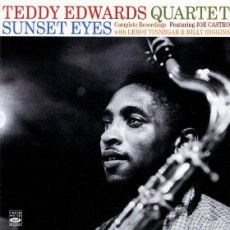
Daily Dose Of Jazz…
Teddy Edwards was born Theodore Marcus Edwards in Jackson, Mississippi on April 26, 1924. Learning to play at a very early age he began on alto, then clarinet, finally settling on the tenor. His first professional gig was with the Royal Mississippians prior to his uncle sending for him in Detroit where he lived for a short time. Although presented with the chance for greater opportunities family illness took him back to Jackson.
Venturing to Louisiana he met Ernie Fields who persuaded him to join his band and touring through Tampa, Washington, DC thwarted his dream of New York and Edwards ended up in Los Angeles, which would become his permanent residence in 1945. It was during this period in his career when he started playing with Howard McGhee’s band that Teddy switched to the tenor saxophone.
Teddy played with such notables as Charlie Parker, Roy Milton, Wynonie Harris, Vince Guaraldi, Joe Castro, Ernie Andrews among others and recording “The Duel” with Dexter Gordon in 1947 set Edwards up as a dueling legend. As a leader, throughout the 50s and 60s he worked with Max Roach, Clifford Brown, Benny Carter, Benny Goodman, Milt Jackson Sarah Vaughan, Tom Waits and Jimmy Smith, recording on Onyx, Pacific Jazz, Contemporary, Prestige and other labels, writing his best known composition Sunset Eyes.
Teddy Edwards, who became one of the most influential tenor saxophonists passed away on April 20, 2003. His sound exemplified an affinity for the blues and tone-quality that accompanies within a fluent post-bop vocabulary.
More Posts: saxophone
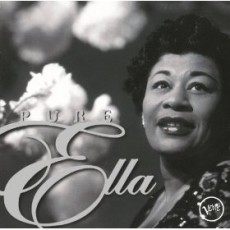
Daily Dose Of Jazz…
Ella Jane Fitzgerald was born on April 25, 1917 in Newport News, Virginia, the child of common law parents who separated shortly after her birth. Her mother moved her to Yonkers, New York and as a child she wanted to be a dancer but loved listening to the jazz of Louis Armstrong, Bing Crosby and The Boswell Sisters.
However, losing her mother to a heart attack in 1932 and the subsequent trauma caused her grades to drop, skip school, become a bordello lookout, and become involved with a Mafia affiliated numbers runner. This trouble led to reform school, ultimate escape, homelessness, and apprehension and sent to the Colored Orphan Asylum in the Bronx.
Ella made her singing debut at age 17 on November 21, 1934 at the Apollo Theatre. Pulling in a weekly audience won her the opportunity to compete in the Amateur Nights where she won first prize. Her winning spirit led her to perform with the Tiny Bradshaw band at the Harlem Opera House in 1935, and then to meet Chick Webb who offered her an opportunity to test with the band at a Yale University dance. This led to a regular gig with Webb at the Savoy Ballroom and in 1938 her rendition of the nursery rhyme A-Tisket, A-Tasket that she co-wrote, brought her wide public acclaim. When Webb died in 1939, Ella became the bandleader renaming it Ella Fitzgerald and Her Famous Orchestra, and went on to record nearly 150 songs during this tenure.
Pursuing a solo career she left the band, signed with Decca Records, began working with Norman Granz’s Jazz At The Philharmonic, and saw the demise of swing and the big touring bands. With Granz as her manager creating Verve Records around her and the advent of bebop, Fitzgerald changed her style of singing evident in her work with Dizzy Gillespie. She included scat in her repertoire and her rendition of Flying Home became one of the most influential vocal jazz records. Other songs like Oh, Lady Be Good would enhance her reputation as an important jazz vocalist.
Over the course of a career spanning nearly 60 years she recorded her now famous songbooks, recorded for a host of labels, performed all over the world. Fitzgerald appeared on film in Pete Kelly’s Blues, St. Louis Blues, and Let No Man Write My Epitaph. On television her most famous commercial was with Memorex in which her singing of a note and the subsequent playback shatters a glass – “Is it live or is it Memorex?”
Ella Fitzgerald, the three-octave vocalist noted for her purity of tone, impeccable diction, phrasing, intonation and horn-like improvisation ability is considered one of the supreme interpreters of the Great American Songbook. She has been photographed by Annie Liebovitz, won 14 Grammy awards, received the National Medal of Art by President Ronald Reagan and the Presidential Medal Of Freedom from George H.W. Bush.
After a long battle with diabetes Ella Fitzgerald passed away on June 15, 1996 at the age of 79 in Beverly Hills, California. So important was her contribution to the genre that her career history and archival material are housed at the Archives Center at the Smithsonian’s National Museum of American History; her personal music arrangements are at The Library of Congress; her extensive cookbook collection was donated to the Schlesinger Library at Harvard University; and her published sheet music collection is at the Schoenberg Library at UCLA.
More Posts: vocal
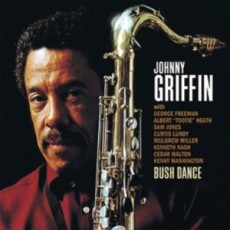
Daily Dose Of Jazz…
John Arnold Griffin III was born on April 24, 1928 in Chicago, Illinois. Nicknamed the “Little Giant”, he studied music at DuSable High School starting out on clarinet, taking up the oboe and finally the alto saxophone. At fifteen he was playing with T-Bone Walker and three days after graduation joined Lionel Hampton who encouraged the young man to take up the tenor, appearing on a Hamp recording in 1945 at age 17.
In the mid-forties Johnny formed a sextet with Joe Morris and George Freeman, played on R&B records for Atlantic Records and played baritone with Arnett Cobb’s R&B band. After a two-year stint in the Army he returned to Chicago and began establishing his reputation, subsequently signing with Blue Note. By 1957 he gained membership into Art Blakey’s Jazz Messengers, then replaced Coltrane in Monk’s Five Spot Quartet, and recorded Thelonious In Action and Misterioso.
On his first leader outing in 1956 with Blue Note that brought him critical acclaim, Griffin led Wynton Kelly, Curly Russell and Max Roach on “Introducing Johnny Griffin”. This was immediately followed the next year with “A Blowing Session” featuring Coltrane and Hank Mobley. He went on to play with Monk, Blakey and with Clark Terry. During this period he became known as the fastest tenor in the west for the ease with which he could execute fast note runs with excellent intonation.
In 1960 he teamed up with Eddie “Lockjaw” Davis establishing a quintet and recorded several albums over the next two years, then moved to France in ’63 and recorded with Wes Montgomery and Dizzy Gillespie, Nat Adderley, and joined the Kenny Clarke-Francy Boland Big Band and by 1978 he moved to the Netherlands. He became the first choice sax player for touring musicians to the continent. In the seventies he and Davis recorded again, he played with Toots Thielemans, Nat Adderley, Grady Tate, Stan Getz, Art Farmer, Slide Hampton, Gerry Mulligan and arranger Quincy Jones among a host of others.
On July 25, 2008, Johnny Griffin passed away of a heart attack at the age of 80 in Mauprévoir, France, his home for the last 24 years of his life.
More Posts: saxophone
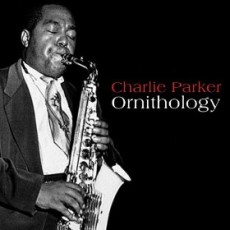
Daily Dose Of Jazz…
Benny Harris was born on April 23, 1919 in New York City. His first major gig as a trumpeter was in 1939 with Tiny Bradshaw. He would go on to play with Earl Hines in 1941 and 1943, and worked New York’s 52nd Street bebop circuit in the 1940s.
Harris collaborated with Benny Carter, John Kirby, Coleman Hawkins, Don Byas and Thelonious Monk. He was with Boyd Raeburn from 1944-45 and Clyde Hart in 1944; he and Byas worked together again in 1945. He played less in the late 1940s, though he appeared with Dizzy Gillespie in 1949 and Charlie Parker in 1952. After this Harris quit music entirely.
Never a well-known soloist, Benny is better known for such compositions as “Crazeology” and “Ornithology”, the latter being a signature Charlie Parker tune; “Reets and I”, a Bud Powell favorite; and “Wahoo”, a tune associated with Duke Pearson.
Benny Harris, bebop trumpeter and composer died on May 11, 1975 in San Francisco, California.
More Posts: trumpet
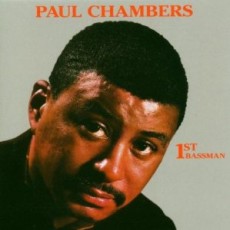
Daily Dose Of Jazz…
Paul Laurence Dunbar Chambers, Jr. was born in Pittsburgh, Pennsylvania on April 22, 1935 but was raised in Detroit after the death of his mother. He began his music career as a youth playing the baritone horn, then switched to the tuba but by age 14 finally settled on the string bass in 1949. Through high school he trained with a Detroit Symphony Orchestra bassist, played classical music with the Detroit String Band, played with the Cass Technical High School Symphony and various other student groups that often had him playing the baritone saxophone.
Bassist Jimmy Blanton was Paul’s biggest influence but Charlie Parker and Bud Powell were his first influences. He admired Oscar Pettiford and Ray Brown, followed by Percy Heath, Milt Hinton and Wendell Marshall for their rhythm section work. It was Charles Mingus’ and George Duvivier’s technical prowess that gave him an understanding of their broadening of the jazz bass.
Chambers was invited to New York by Paul Quinichette and was soon touring and playing with George Wallington, J.J. Johnson, John Coltrane, Wes Montgomery, Bennie Green, Thad Jones, Barry Harris and Kai Winding. In 1955 he joined the Miles Davis followed by Wynton Kelly and freelanced with many jazz greats throughout his short but impressive career.
Paul Chambers was a prominent figure and one of the most influential jazz bassists of the 1950s and 60s. His importance in the development of jazz bass can be measured by his impeccable time, intonation and virtuosic improvisations. He, along with Slam Stewart was first to perform arco or bowed features.
Over the span of his extremely short career Paul was a member of two of the jazz world’s most famous “rhythm sections”, the first with Red Garland and Philly Jo Jones, the second with Wynton Kelly and Jimmy Cobb. On January 4, 1969 he passed away of tuberculosis at the premature age of 33.
More Posts: bass





